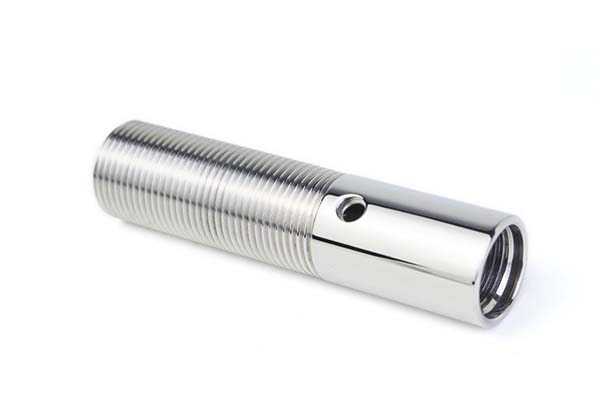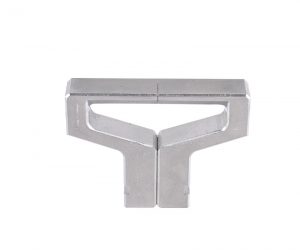Understanding Prototype Development Services
What Exactly Are Prototype Development Services?
Prototype development services involve the creation of a preliminary model of a product. This model, known as a prototype, is a tangible representation of the final product, allowing stakeholders to visualize, test, and refine the product's design and functionality before full - scale production. It serves as a crucial step in the product development lifecycle, bridging the gap between a concept and a market - ready product.
For Yigu Technology example, if a company plans to launch a new smartphone, the prototype development service will first create a model that may or may not have all the final features but will have the core functions like screen display, basic touch - screen interaction, and the ability to make calls (if it's a key feature). This prototype can then be used to test the user interface, ergonomics of holding the phone, and early - stage software functionality.
Different Types of Prototypes
| Type of Prototype | Fidelity Level | Focus | Use Case | Creation Time and Cost |
| Low - Fidelity | Low | Basic structure and layout | Early concept exploration and getting initial feedback | Quick and inexpensive |
| High - Fidelity | High | Visual appearance, full functionality, and accurate interactions | User acceptance testing, investor demos, and final - stage usability testing | Time - consuming and expensive |
| Horizontal | Medium | User interface and cross - functional interactions | Requirements gathering and user experience design refinement | Moderate time and cost |
| Vertical | Medium to High (depending on complexity) | In - depth functionality of a specific feature | Proving technical feasibility and reducing risks during design and development | Varies depending on the complexity of the feature |
The Problems Solved by Prototype Development Services
Problem 1: Unclear Requirements
In product development, unclear requirements can be a major stumbling block. When clients or stakeholders have a vague idea of what they want, it becomes extremely difficult for the development team to create a product that meets their expectations. This often leads to misunderstandings, miscommunications, and ultimately, a product that may not solve the intended problem. For example, a client might say they want a "user - friendly mobile app for fitness tracking" without specifying details such as which fitness metrics to track, the target user group's technical proficiency, or the preferred user interface style.
Prototype development services address this issue by providing a visual and tangible representation of the product. By creating a prototype, whether it's a low - fidelity wireframe or a high - fidelity mock - up, the development team can present a clear picture of how the product will look and function. This allows the client to see the product in a more concrete form and provides an opportunity for them to provide more specific feedback. They can point out elements that are missing, functions that don't meet their needs, or aspects of the design that are confusing. According to a study by the Standish Group, projects that use prototyping techniques are 30% more likely to meet user requirements compared to those that don't. This is because the iterative nature of prototype development allows for continuous refinement based on feedback, ensuring that the final product aligns closely with the client's vision.
Problem 2: High Costs of Mistakes
Making mistakes in the later stages of product development can be extremely costly. As the development progresses, more resources, including time, labor, and materials, have been invested. Any changes or corrections at this point require significant rework, which can lead to increased costs and project delays. For instance, in the manufacturing of a physical product, if a design flaw is discovered after the molds have been created, modifying the design can involve scrapping the existing molds, creating new ones, and re - engineering parts of the production process. This not only incurs the cost of new molds but also the cost of the lost production time and the potential waste of raw materials.
Prototype development helps mitigate these risks by allowing problems to be identified and resolved in the early stages. By testing the prototype, both the development team and the client can detect design flaws, usability issues, or functional problems long before large - scale production begins. A report by McKinsey & Company found that companies that invest in prototyping can reduce overall development costs by up to 50%. This is because the cost of making changes to a prototype is significantly lower than making changes to a fully - developed product.
Problem 3: Technical Feasibility Doubts
When developing a new product, there are often doubts about the technical feasibility of the proposed solution. This is especially true when the product involves new technologies, complex algorithms, or innovative design concepts. For example, a company might want to develop a smart home device that can predict user behavior and adjust the home environment accordingly. The idea sounds promising, but there may be concerns about whether the current technology can accurately predict user behavior, how the device will communicate with other smart home devices, and whether the power consumption of the device will be manageable.
Prototype development services can help answer these questions. By creating a prototype, the development team can test the technical aspects of the product. They can experiment with different technologies, algorithms, and design approaches to see what works best. A prototype can be used to conduct proof - of - concept tests, where the key technical functions are demonstrated. If the prototype successfully performs the required functions, it provides evidence that the product is technically feasible. On the other hand, if there are problems, the team can use the insights gained from the prototype to refine the technical approach or explore alternative solutions. A study by the National Institute of Standards and Technology (NIST) showed that 70% of projects that faced technical feasibility challenges were able to overcome them with the help of prototyping. This highlights the importance of prototyping in validating technical concepts and reducing the risks associated with unproven technologies.
Tips for Choosing the Right Prototype Development Service
Consider Your Project Goals
Before selecting a prototype development service, it's crucial to have a clear understanding of your project goals. Are you looking to quickly test a new concept? In that case, a service that specializes in rapid, low - fidelity prototype development might be the best fit. For Yigu Technology example, if you're a startup with a revolutionary idea for a mobile app but aren't sure if the market will respond positively, a low - fidelity prototype can help you gather initial feedback at a relatively low cost.
On the other hand, if your goal is to present a highly polished product to investors or clients to secure funding or partnerships, a high - fidelity prototype is essential. High - fidelity prototypes are not only visually appealing but also mimic the actual functionality of the final product closely. A study by CB Insights found that startups that presented high - fidelity prototypes to investors were 20% more likely to secure funding compared to those with low - or no prototypes. This shows how the right type of prototype, aligned with your project goals, can significantly impact the success of your product.
Evaluate the Service Provider's Track Record
The track record of a prototype development service provider is a strong indicator of their reliability and expertise. Look for providers with a diverse portfolio of past projects. A service that has worked on a variety of products, such as consumer electronics, software applications, and industrial equipment, is likely to have the experience and skills to handle different types of challenges.
Check for client testimonials and reviews. Positive feedback from previous clients can give you confidence in the service provider's capabilities. For instance, if a provider has received praise for their ability to meet deadlines, manage complex projects, and deliver high - quality prototypes, it's a good sign. According to a survey by Clutch, 85% of clients consider client reviews as one of the most important factors when choosing a service provider. Additionally, look for case studies that demonstrate how the provider has helped clients solve specific problems during the prototype development process. This can give you insights into their problem - solving approach and the quality of their work.
Look at the Available Technologies
The technologies used by a prototype development service provider can greatly influence the quality and functionality of your prototype. Ensure that the provider is up - to - date with the latest technologies relevant to your product.
Some providers may have in - house developed tools or use emerging technologies to gain a competitive edge. For instance, the use of 3D printing technology has become increasingly popular in prototype development, especially for physical products. 3D printing allows for the rapid creation of complex shapes and components, reducing the time and cost associated with traditional manufacturing methods. A provider that can effectively utilize 3D printing technology can offer you more design flexibility and faster turnaround times. On the other hand, if the service is still relying on outdated technologies, it may limit the capabilities of your prototype and potentially lead to a sub - par final product.
Summarizing the Benefits of Prototype Development Services
Yigu Technology Prototype development services play a pivotal role in the product development process. They offer a practical solution to a range of problems that can derail a product's success. By creating prototypes, companies can transform vague ideas into tangible models, making it easier to define and refine product requirements. This not only saves time and money in the long run but also ensures that the final product meets the expectations of the target market.
The ability to test and validate a product's technical feasibility early on is another significant advantage of prototype development. It allows companies to identify and address potential issues before investing substantial resources in full - scale production. This risk - mitigation strategy can prevent costly mistakes and delays, giving companies a competitive edge in the market.
At Yigu Technology, we have extensive experience in providing high - quality prototype development services. Our team of experts is dedicated to helping you bring your ideas to life, from concept to prototype and beyond. Contact us today to learn more about how we can assist you in your product development journey and turn your vision into a successful product.

